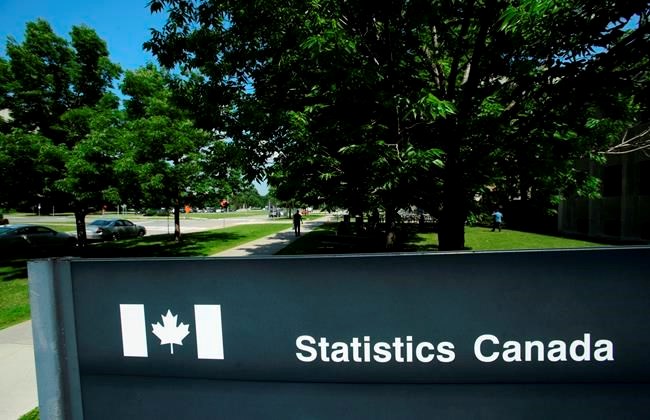OTTAWA — Canada's inflation rate turned negative in April as the economy came to a standstill in the first full month of the pandemic as part of a spending shift that a top central banker says may signal further changes in consumption patterns post-COVID-19.
Statistics Canada said Wednesday the consumer price index for April fell 0.2 per cent compared with a year ago, the first year-over-year decline since September 2009.
The reading compared with a year-over-year increase of 0.9 per cent in March, when the pandemic first started to affect the broader economy.
The drop in inflation in April was fuelled by a 39.3 per cent plunge in gasoline prices the largest year-over-year decline on record. Excluding energy, Statistics Canada said CPI rose 1.6 per cent.
The price changes helped paint a portrait of what shifted last month as the pandemic drove demand for some goods and services over others.
When prices drop, consumers may start to put off buying things now in hopes of paying less in the future. When that happens, businesses can be hurt, making the economy even worse.
In an afternoon speech, Bank of Canada deputy governor Timothy Lane said many of the changes will reverse as restrictions are eased and businesses reopen, but warned of "persistent price effects" for different products and services and further changes in consumption patterns.
The central bank expects downward pressure on inflation even once restrictions have eased.
"Even if the economy as a whole bounces back quickly when the shutdown is eased, some sectors may be permanently affected," Lane says in his speech, citing "lasting effect on travel of all kinds" and the "long-term prospects for oil demand and prices."
Prices have moved higher in recent weeks, TD Bank senior economist James Marple wrote in a report, suggesting "the biggest of the price declines are likely in the rear-view mirror."
Household cleaning products increased on a monthly basis by 4.6 per cent, while toilet paper fuelled an increase in the "paper supplies" category by six per cent, the largest monthly increase for that index on record.
Travel and accommodation prices fell 9.8 per cent on a yearly basis in April, the largest decline since 2011 as public health restrictions limited travel to and within Canada, the agency said.
Statistics Canada said there were notable declines in locations near major tourist attractions, including Niagara Falls and the Rocky Mountains.
Food prices for rice, eggs and margarine posted "significant increases," the agency said, coinciding with higher demand for non-perishable products as consumers were encouraged to limit shopping trips.
Prices for pork and beef increased by nine and 8.5 per cent, respectively, compared with April 2019. The change was due to a boost in sales and supply issues, including a slowdown in cross-border shipping and production cuts or temporary closures of Canadian meat processing plants, Statistics Canada said.
Lane says there is an expectation among Canadian firms of a "return to domestic manufacturing" post-pandemic.
"They expect supply chains to shrink and diversify and essential health products to be produced domestically," he said in the prepared text of his speech. "Supply chain disruptions imply a loss of access to some markets, and consumers would likely pay more for goods and services."
The average of Canada's three measures for core inflation, which are considered better gauges of underlying price pressures and closely tracked by the Bank of Canada, was 1.8 per cent year-over-year.
CIBC senior economist Royce Mendes wrote in a note that the central bank will likely "look through the deflationary print" because the it didn't reflect of the pricing environment for consumers.
"Nevertheless, with the economy likely still underperforming if and when further restrictions are lifted, there will be an underlying drag on inflation that central bankers will need to offset with additional monetary easing," Mendes writes.
In a separate report, Statistics Canada said wholesale sales fell 2.2 per cent to $63.9 billion in March.
The overall drop came as the motor vehicle and motor vehicle parts and accessories subsector plunged 21.2 per cent, the largest monthly percentage drop since January 2009. Excluding the subsector, wholesale sales rose 2.1 per cent.
In volume terms, wholesale sales dropped 2.8 per cent.
This report by The Canadian Press was first published May 20, 2020.
Jordan Press and Craig Wong, The Canadian Press




